The elongation complex components BRD4 and MLLT3/AF9 are transcriptional coactivators of nuclear retinoid receptors
- PMID: 23762261
- PMCID: PMC3677938
- DOI: 10.1371/journal.pone.0064880
The elongation complex components BRD4 and MLLT3/AF9 are transcriptional coactivators of nuclear retinoid receptors
Abstract
Nuclear all-trans retinoic acid receptors (RARs) initiate early transcriptional events which engage pluripotent cells to differentiate into specific lineages. RAR-controlled transactivation depends mostly on agonist-induced structural transitions in RAR C-terminus (AF-2), thus bridging coactivators or corepressors to chromatin, hence controlling preinitiation complex assembly. However, the contribution of other domains of RAR to its overall transcriptional activity remains poorly defined. A proteomic characterization of nuclear proteins interacting with RAR regions distinct from the AF-2 revealed unsuspected functional properties of the RAR N-terminus. Indeed, mass spectrometry fingerprinting identified the Bromodomain-containing protein 4 (BRD4) and ALL1-fused gene from chromosome 9 (AF9/MLLT3), known to associate with and regulates the activity of Positive Transcription Elongation Factor b (P-TEFb), as novel RAR coactivators. In addition to promoter sequences, RAR binds to genomic, transcribed regions of retinoid-regulated genes, in association with RNA polymerase II and as a function of P-TEFb activity. Knockdown of either AF9 or BRD4 expression affected differentially the neural differentiation of stem cell-like P19 cells. Clusters of retinoid-regulated genes were selectively dependent on BRD4 and/or AF9 expression, which correlated with RAR association to transcribed regions. Thus RAR establishes physical and functional links with components of the elongation complex, enabling the rapid retinoid-induced induction of genes required for neuronal differentiation. Our data thereby extends the previously known RAR interactome from classical transcriptional modulators to components of the elongation machinery, and unravel a functional role of RAR in transcriptional elongation.
Conflict of interest statement
Figures
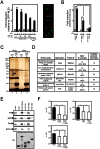
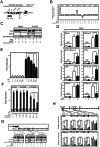
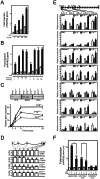
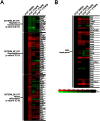
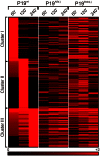


Similar articles
-
Human T-lymphotropic virus type 1 Tax protein complexes with P-TEFb and competes for Brd4 and 7SK snRNP/HEXIM1 binding.J Virol. 2010 Dec;84(24):12801-9. doi: 10.1128/JVI.00943-10. Epub 2010 Oct 6. J Virol. 2010. PMID: 20926576 Free PMC article.
-
Chromosomal integration of retinoic acid response elements prevents cooperative transcriptional activation by retinoic acid receptor and retinoid X receptor.Mol Cell Biol. 2002 Mar;22(5):1446-59. doi: 10.1128/MCB.22.5.1446-1459.2002. Mol Cell Biol. 2002. PMID: 11839811 Free PMC article.
-
Disrupting the interaction of BRD4 with diacetylated Twist suppresses tumorigenesis in basal-like breast cancer.Cancer Cell. 2014 Feb 10;25(2):210-25. doi: 10.1016/j.ccr.2014.01.028. Cancer Cell. 2014. PMID: 24525235 Free PMC article.
-
The double bromodomain-containing chromatin adaptor Brd4 and transcriptional regulation.J Biol Chem. 2007 May 4;282(18):13141-5. doi: 10.1074/jbc.R700001200. Epub 2007 Feb 28. J Biol Chem. 2007. PMID: 17329240 Review.
-
The multi-tasking P-TEFb complex.Curr Opin Cell Biol. 2008 Jun;20(3):334-40. doi: 10.1016/j.ceb.2008.04.008. Epub 2008 May 29. Curr Opin Cell Biol. 2008. PMID: 18513937 Free PMC article. Review.
Cited by
-
Ready, pause, go: regulation of RNA polymerase II pausing and release by cellular signaling pathways.Trends Biochem Sci. 2015 Sep;40(9):516-25. doi: 10.1016/j.tibs.2015.07.003. Epub 2015 Aug 4. Trends Biochem Sci. 2015. PMID: 26254229 Free PMC article. Review.
-
Getting up to speed with transcription elongation by RNA polymerase II.Nat Rev Mol Cell Biol. 2015 Mar;16(3):167-77. doi: 10.1038/nrm3953. Epub 2015 Feb 18. Nat Rev Mol Cell Biol. 2015. PMID: 25693130 Free PMC article. Review.
-
RNA polymerase II pausing in development: orchestrating transcription.Open Biol. 2022 Jan;12(1):210220. doi: 10.1098/rsob.210220. Epub 2022 Jan 5. Open Biol. 2022. PMID: 34982944 Free PMC article. Review.
-
Chromatin Architecture of the Pitx2 Locus Requires CTCF- and Pitx2-Dependent Asymmetry that Mirrors Embryonic Gut Laterality.Cell Rep. 2015 Oct 13;13(2):337-49. doi: 10.1016/j.celrep.2015.08.075. Epub 2015 Sep 24. Cell Rep. 2015. PMID: 26411685 Free PMC article.
-
An in vivo CRISPR screen in chick embryos reveals a role for MLLT3 in specification of neural cells from the caudal epiblast.Development. 2025 Feb 1;152(3):DEV204591. doi: 10.1242/dev.204591. Epub 2025 Feb 12. Development. 2025. PMID: 39804120 Free PMC article.
References
-
- Samarut E, Rochette-Egly C (2012) Nuclear retinoic acid receptors: conductors of the retinoic acid symphony during development. Mol Cell Endocrinol 348: 348–360. - PubMed
-
- Ju BG, Lunyak VV, Perissi V, Garcia-Bassets I, Rose DW, et al. (2006) A topoisomerase IIbeta-mediated dsDNA break required for regulated transcription. Science 312: 1798–1802. - PubMed
-
- Pavri R, Lewis B, Kim TK, Dilworth FJ, Erdjument-Bromage H, et al. (2005) PARP-1 determines specificity in a retinoid signaling pathway via direct modulation of mediator. Mol Cell 18: 83–96. - PubMed
-
- Lefebvre B, Brand C, Flajollet S, Lefebvre P (2006) Down-Regulation of the Tumor Suppressor Gene Retinoic Acid Receptor {beta}2 through the Phosphoinositide 3-Kinase/Akt Signaling Pathway. Mol Endocrinol 20: 2109–2121. - PubMed
Publication types
MeSH terms
Substances
LinkOut - more resources
Full Text Sources
Other Literature Sources
Molecular Biology Databases

